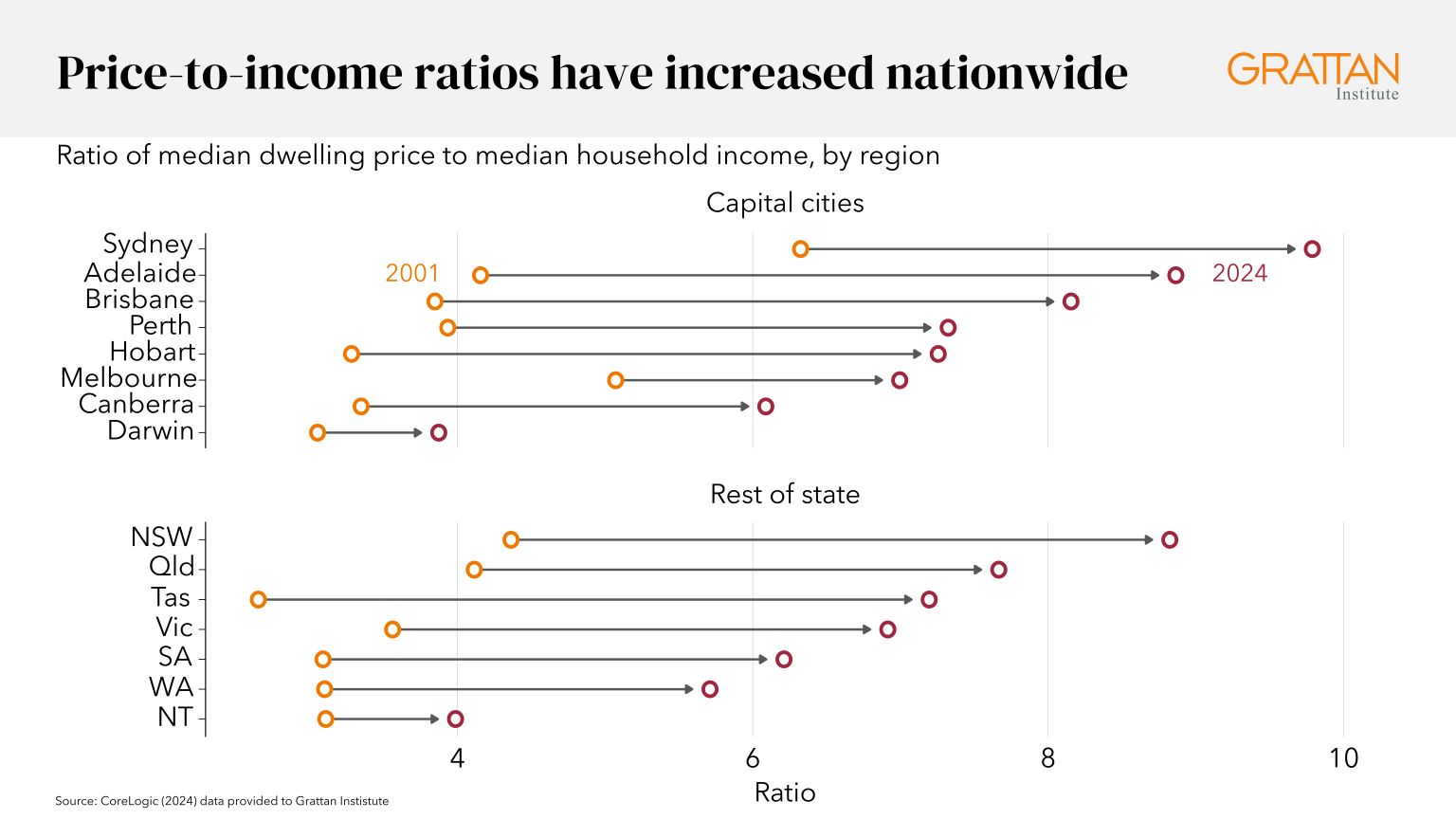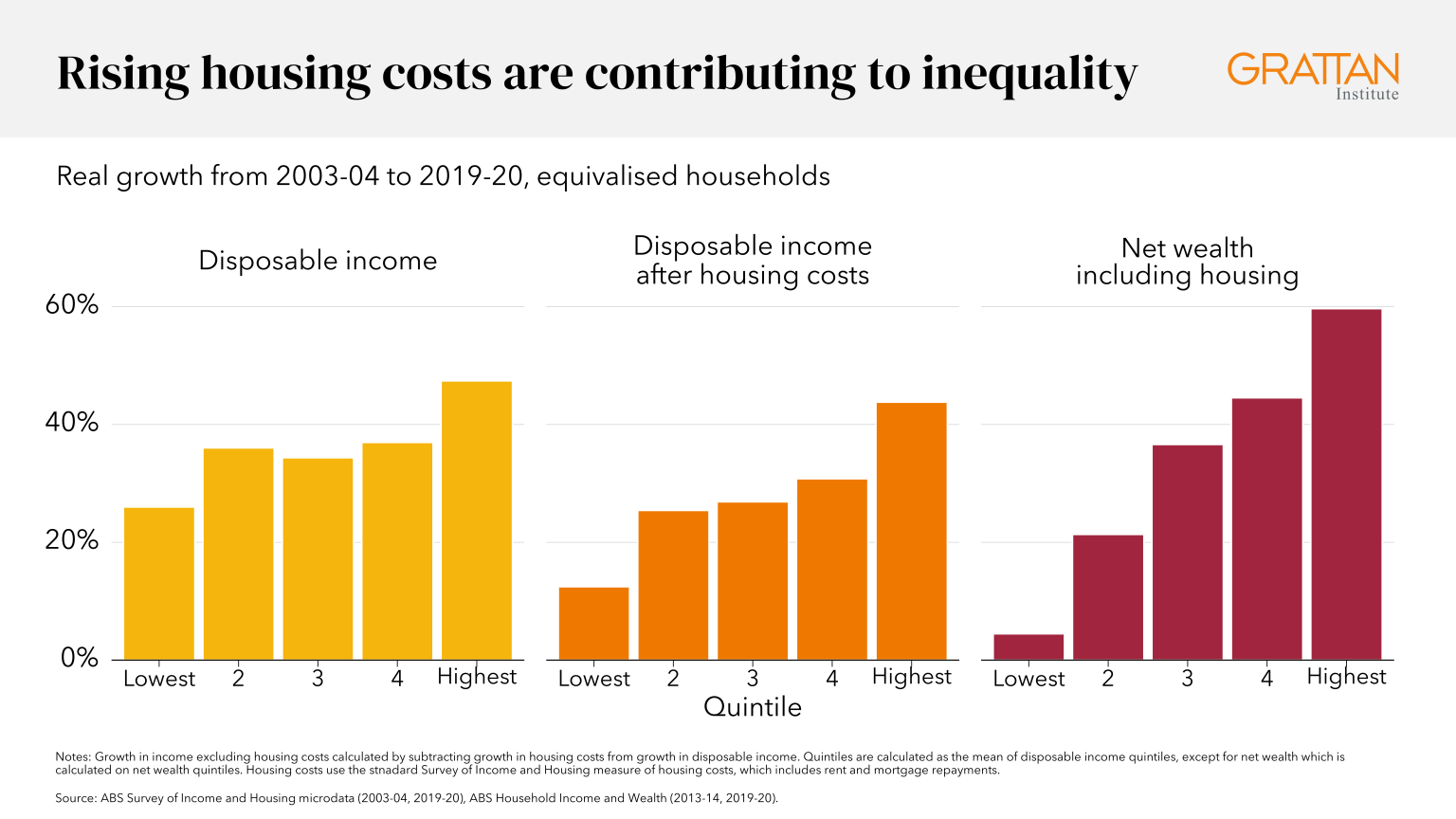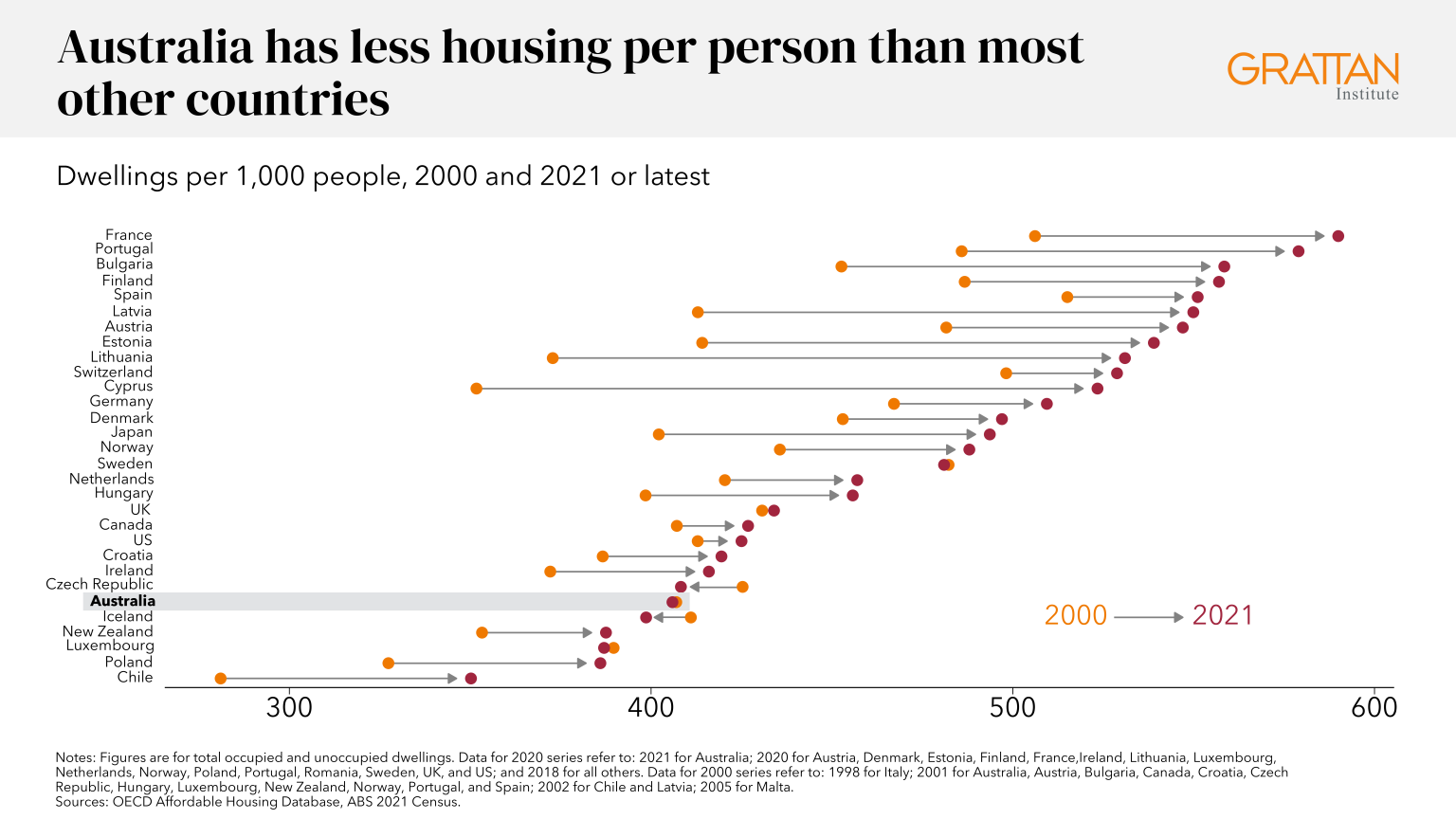

In the past quarter-century, housing affordability in Australia has deteriorated faster than most other national issues.
As house prices skyrocket, the dream of homeownership is increasingly out of reach, particularly for economically disadvantaged Australians.
This surge in prices is not just affecting buyers; renters are also facing steep increases, particularly post-pandemic, with some cities seeing rental costs rise by around 20%, Grattan Institute reported.

The climbing house prices have significantly lengthened the time it takes to save for a home.
While in the early 1990s, it took approximately six years to gather a 20% deposit, that figure has now ballooned to over 12 years.
Homeownership among young Australians has seen a marked decline. For instance, only 50% of 30–34-year-olds owned their home in 2021, down from 57% in 2001.
This trend is even starker among the poorest 40% in each age group, where homeownership rates are dropping most rapidly.

The stark disparities in homeownership are contributing to growing wealth inequality, Grattan Institute said.
The wealth of higher-income households has surged by over 50% since 2003, largely due to rising property values. In contrast, the wealth of low-income households, who are predominantly renters, has increased by less than 10%.
The generational divide is widening as older Australians who purchased homes before the 2000s have seen substantial wealth accumulation, whereas younger generations face a much bleaker economic landscape.
Adding to this concern, Monash University’s third Transforming Australia report revealed a troubling trend in wealth distribution: the share of wealth held by Australia’s bottom 40% has sharply declined from 7.8% in 2004 to about 5.5% in 2020. Additionally, the increase in poverty—with 3.3 million Australians now living below the poverty line—underscored the urgency of addressing these disparities.
A critical driver of the housing affordability crisis is the failure to construct enough homes to meet demand.
Despite a booming population and changing demographic trends like higher divorce rates and an aging population, Australia lags behind other OECD countries in housing construction.
Restrictive land-use policies and community resistance make it challenging to build in high-demand areas.
There is some positive movement at the state level, with governments in Victoria and New South Wales making strides towards increasing housing construction around transport hubs and activity centers.
However, the resistance from community groups, often labeled as NIMBYs, poses a significant hurdle.
The ability of governments to navigate these challenges and push through necessary reforms will be crucial in addressing the housing affordability crisis, Grattan Institute said.
